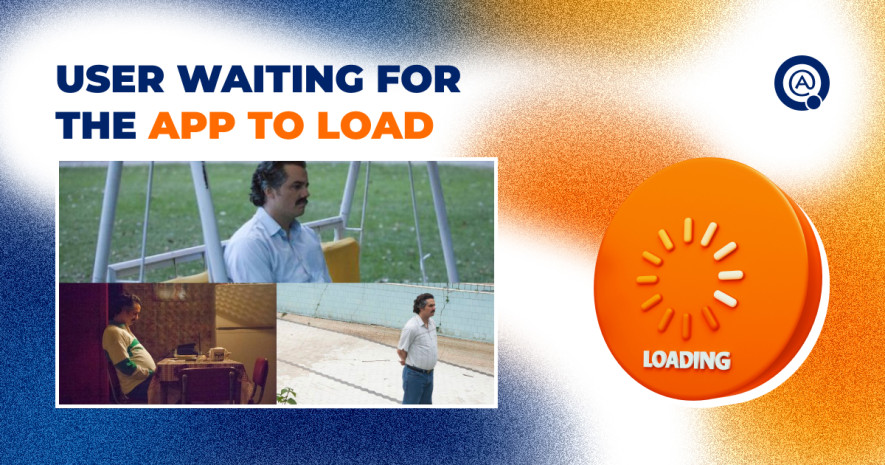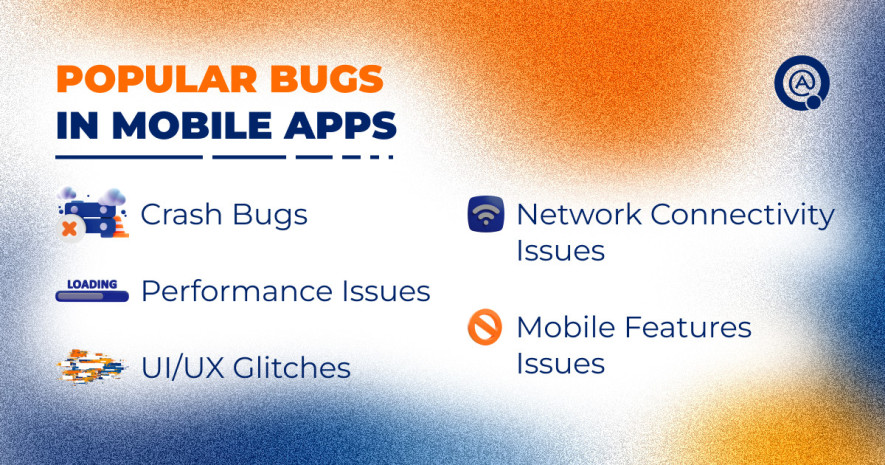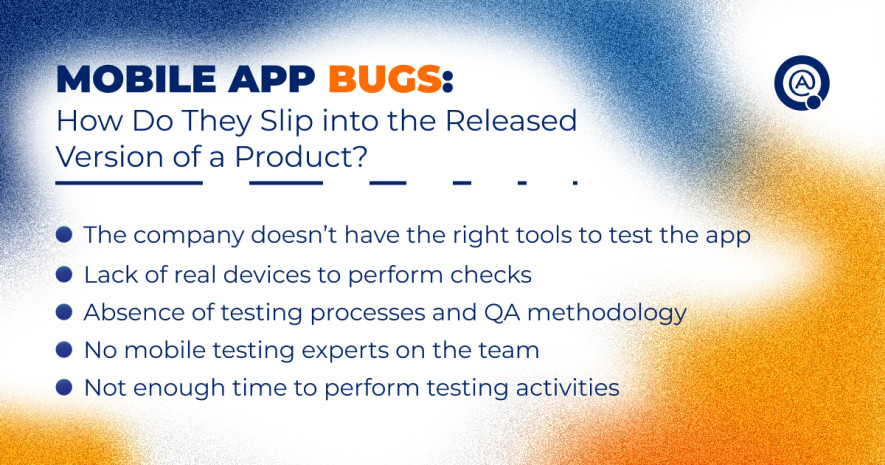- QATestLab Blog >
- QA Basics >
- Types of Software Testing >
- Usability Testing >
- 5 Most Troublesome Mobile App Bugs to Avoid
One can’t deny that mobile applications have become an integral part of our daily lives, simplifying tasks and providing entertainment on the go. However, bugs still manage to creep into these apps, causing frustration for users, challenges for developers, and losses for businesses.
For instance, about 40% of mobile users will uninstall an app without hesitation if it has too many glitches. In the end, there is plenty of fish in the sea, and they can always go to a competitor that has polished their product and made it intuitive and more user-friendly.
Creating a positive first impression is vital indeed, especially considering 25% of mobile apps are used only once! Unfortunately, we couldn’t find any statistic on how many mistakes the user can tolerate, but it is certainly better not to be the one gathering this data and turning your consumers into beta testers.
The only way not to be a part of this uninstall statistics is to watch out for critical bugs and monitor the overall quality of your solution.
In this article, we will explore the top five issues that plague mobile apps, highlighting their impact and potential solutions.
#1 Crash Bugs
The most common and infuriating bugs encountered in mobile apps are crash bugs.
They cause the application to abruptly shut down, leaving users unable to access its features. For example, a messaging app crashes when the user receives a specific type of multimedia file, such as a large video or an unsupported file format. The crash occurs due to inadequate error handling or lack of compatibility checks.
The build frequently fails and crashes due to a few common reasons. These include issues with the build development itself, outdated extensions being used, updating the IDE (the software used for development) to a new version, and compatibility problems with different components.
Developers must conduct thorough testing on a wide range of devices and operating systems to identify and fix these bugs. Additionally, implementing robust error-handling mechanisms and crash-reporting tools can help developers track and resolve these issues quickly.
#2 Performance Issues
Performance bugs significantly impact the user experience by causing slow app loading, laggy interfaces, and unresponsive features. These issues can stem from inefficient coding practices, excessive memory usage, poor network optimization, or inadequate resource management.

App developers need to conduct rigorous performance testing, optimize code, and employ caching techniques to enhance app responsiveness and reduce unnecessary resource consumption.
Additionally, continuously monitoring and analyzing app performance using analytics tools can help identify and resolve performance bottlenecks.
#3 UI/UX Glitches
User Interface (UI) and User Experience (UX) bugs can greatly hinder the usability and appeal of mobile apps.
The most widespread scenario is, of course, when one UI element overlaps another one, be it an icon, a button, or an order price. Other common bugs in this category include:
- Cropped titles and images
- Improper email wrapping
- Overflowing content
- Background color matching input text
- Pop-ups staying visible for a long time
- Logo flickering upon tap
- Incorrect page scrolling
- Interface elements aren’t loading
UI/UX bugs can arise due to device fragmentation, where apps need to adapt to various screen sizes and resolutions.
To mitigate these bugs, QA specialists must conduct extensive UI/UX testing across different devices and screen sizes. Regularly soliciting user feedback and engaging in usability testing can also help identify and rectify UI/UX glitches.

#4 Network Connectivity Issues
Mobile apps heavily rely on network connectivity to function seamlessly. However, bugs related to network interaction can disrupt the app’s core functionality, such as data synchronization, real-time updates, or online transactions.
An example could be when a weather app fails to update the user’s location-based weather information when the device switches from Wi-Fi to mobile data. The app may have inadequate network handling, resulting in a failure to seamlessly switch between network connections.
To avoid network-connectivity issues, testers should rigorously check the app’s behavior under varying network conditions. Once that is done, developers can implement appropriate error-handling mechanisms, and optimize API integrations.

#5 Mobile Features Issues
These problems occur specifically in mobile apps, and we bet all of us have experienced them at least once in our lives. The button doesn’t work, or it’s not there at all. Push notifications are working incorrectly, and you just can’t close them. The app may interact poorly with the camera and other phone components used in the app. Sounds familiar?
Your users will not likely interact with the app again after such an unpleasant experience.
To avoid such issues, we always thoroughly test all buttons, push notifications, and integrations within mobile apps to ensure they function as intended. We also pay close attention to commonly used features such as login and payment modules.
While going through this list, you might have wondered – But these bugs are so obvious. Of course, developers are aware of them. How does it happen they appear in the released version of a product?
Based on our experience, there are a few reasoning why these types of bugs are overlooked.

Summing up
While mobile apps have revolutionized how we interact with technology, bugs can still undermine their functionality, performance, and security.
By recognizing and addressing the top five bugs discussed above, app developers can enhance the overall user experience and create robust and reliable applications.
Let’s get in touch and see how our independent QA services can be of use to your company. Contact us and tell us about your product, and we will develop a tailored QA solution to satisfy your testing needs.
Learn more from QATestLab
Related Posts:
- Automation Testing for Mobile Apps: Why It’s Essential and Our Key Services
- Testing on Real Devices — Just an Option or a Necessity?
- How One Bug Can Wreck Your Reputation — And How QA Prevents It
About Article Author
view more articles








No Comments Yet!
You can be the one to start a conversation.